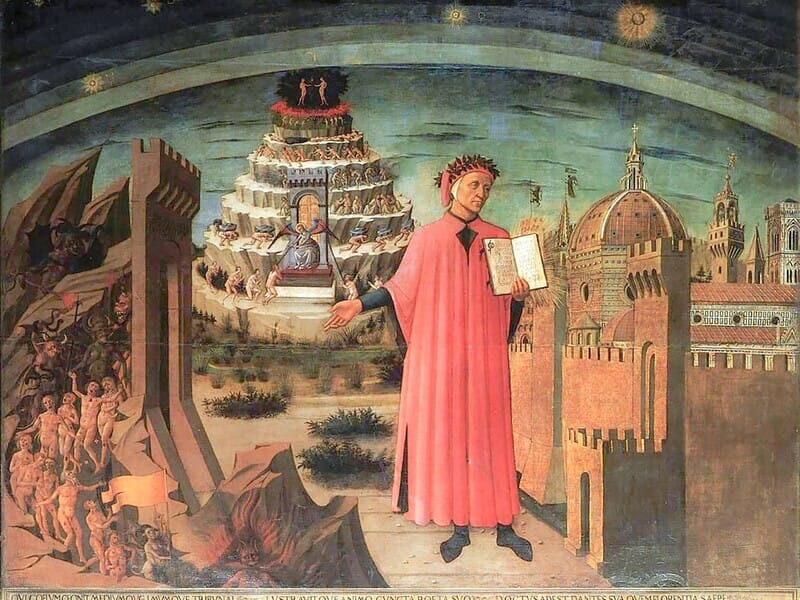Seven centuries have passed since the death of Dante Alighieri, the iconic Italian poet whose influence continues to weave through the historical streets of Florence. Despite profound transformations, the city still bears traces of Dante’s legacy, offering a captivating journey through time and art.
Dante’s Baptism and the Divine Comedy Tribute
Dante, likely baptized during the Holy Saturday ceremony in 1266 at the Baptistery of San Giovanni, found inspiration for his Divine Comedy in this octagonal building. Today, the Cathedral of Santa Maria del Fiore stands before the Baptistery, bearing witness to Dante’s time. Inside, a renowned tribute to the poet, Domenico di Michelino’s painting, captures Dante with the Divine Comedy in hand, immortalizing him in the heart of his masterpiece.
Santa Margherita dei Cerchi
A Haven of Love: The Church of Santa Margherita dei Cerchi, dating back to the first millennium, holds a significant place in Dante’s life. Here, amidst the ancient walls, Dante frequently met his muse, Beatrice Portinari. The church witnessed their love story, culminating in Beatrice’s marriage to Simone de’ Bardi. The little notes left on Beatrice’s tomb make this place a symbol of eternal love, although superstitions caution against reading them.
Casa di Dante
Tracing the Poet’s Residence: Moving ahead to the “Church of Dante,” visitors discover the “Casa di Dante” in a small square. While the current building was reconstructed in the 20th century, the original house likely stood on Via Dante Alighieri. The museum housed within the “Casa di Dante” provides a fascinating glimpse into medieval Florence, spanning three floors with exhibits detailing the city’s history in the 14th century.





